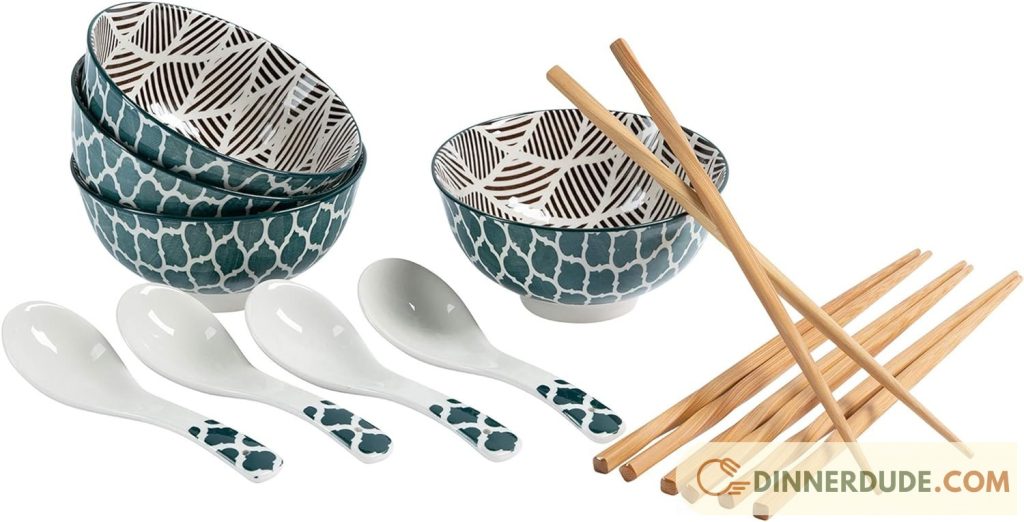The debate between the practicality of chopsticks and spoons has been a topic of discussion for centuries. While some argue that spoons are more technologically advanced and practical, others believe that chopsticks offer unique benefits that enhance the eating experience.
So, Are chopsticks better than spoons? This article aims to delve into this debate, exploring the advantages and disadvantages of both utensils of Dinnerdude
What do chopsticks and spoons have in common?

Chopsticks and spoons, despite their differences in design and cultural associations, share a few common aspects:
| Utensils for Eating | are utensils designed for eating and manipulating food. They serve as tools to convey food from the plate or bowl to the mouth. |
| Versatility | are more strongly associated with specific regions or cultures, both chopsticks and spoons are versatile in their usage. Chopsticks can be used for a variety of solid foods, and spoons are adaptable to both liquid and solid dishes. |
| Cultural Adaptation | have distinct cultural origins and associations, both utensils have adapted to different culinary traditions globally. Chopsticks may vary in design and etiquette across East Asian cultures, and spoons have diverse forms depending on the region. |
| Materials | can be crafted from various materials, including wood, bamboo, metal, plastic, or ceramic. The choice of material often depends on cultural practices, personal preferences, and the intended use. |
| Integral to Dining Practices | Whether in East Asian countries where chopsticks are a staple or in Western cultures where spoons are ubiquitous, both utensils play an integral role in dining practices and are essential tools for enjoying a meal. |
While chopsticks and spoons represent different cultural traditions and have distinct functionalities, their shared purpose as eating utensils and adaptability across various cuisines showcase their commonality in the realm of culinary tools.
The Case for Chopsticks
Chopsticks have been an integral part of Asian culinary culture for over 5,000 years. They symbolize the age-old Chinese civilization and epitomize China’s rich history. But beyond their cultural significance, chopsticks offer several practical benefits.
Mindful Eating with Chopsticks
Research shows that eating with chopsticks can lead to more mindful and slower eating. Unlike spoons or forks, you can’t pile food onto chopsticks with the same ease. Each mouthful is smaller by default, which means you consume your meal more slowly. This slower pace often leads to feeling more satisfied with less food, aiding in portion control and improving digestion.
Versatility of Chopsticks
Chopsticks are particularly useful when consuming certain types of food. For instance, wheat flour foods like noodles and dumplings, which combine grain and non-grain foods in one form, are easier to eat with chopsticks. The spoon, in contrast, struggles to lift these foods effectively.

The Argument for Spoons
Despite the benefits of chopsticks, many argue that spoons and forks are more practical. They are seen as more technologically advanced and are often considered easier to use, especially for those unaccustomed to chopsticks.
Practicality of Spoons
Spoons allow for easy scooping and lifting of food, making them ideal for soups, stews, and other liquid-based dishes. They also enable the consumption of larger mouthfuls, which can be more efficient for those in a hurry.
Technological Advancement

Spoons and forks are often seen as more technologically advanced due to their design. The curved shape of a spoon and the prongs of a fork allow for a variety of uses, from cutting to scooping, that chopsticks cannot easily replicate.
Are chopsticks better than spoons?
The preference for chopsticks or spoons depends on the type of food being consumed, personal comfort, and cultural context.
Chopsticks are traditionally used in East Asian countries for a wide variety of dishes, allowing for precision in picking up small pieces of food. Spoons, on the other hand, are versatile and commonly used in many cultures for soups, stews, and dishes with liquid components.
Whether chopsticks are “better” than spoons is subjective and situational. For certain types of cuisine, like sushi or noodles, chopsticks may be more practical.
In contrast, spoons are often preferred for enjoying soups or dishes with sauces. Ultimately, it comes down to individual preference and the nature of the meal.

In conclusion, whether chopsticks or spoons are better largely depends on personal preference and the type of food being consumed.
While chopsticks promote mindful eating and are better suited for certain foods, spoons offer practicality and versatility. Ultimately, both utensils have their unique advantages and play significant roles in our diverse global culinary landscape.